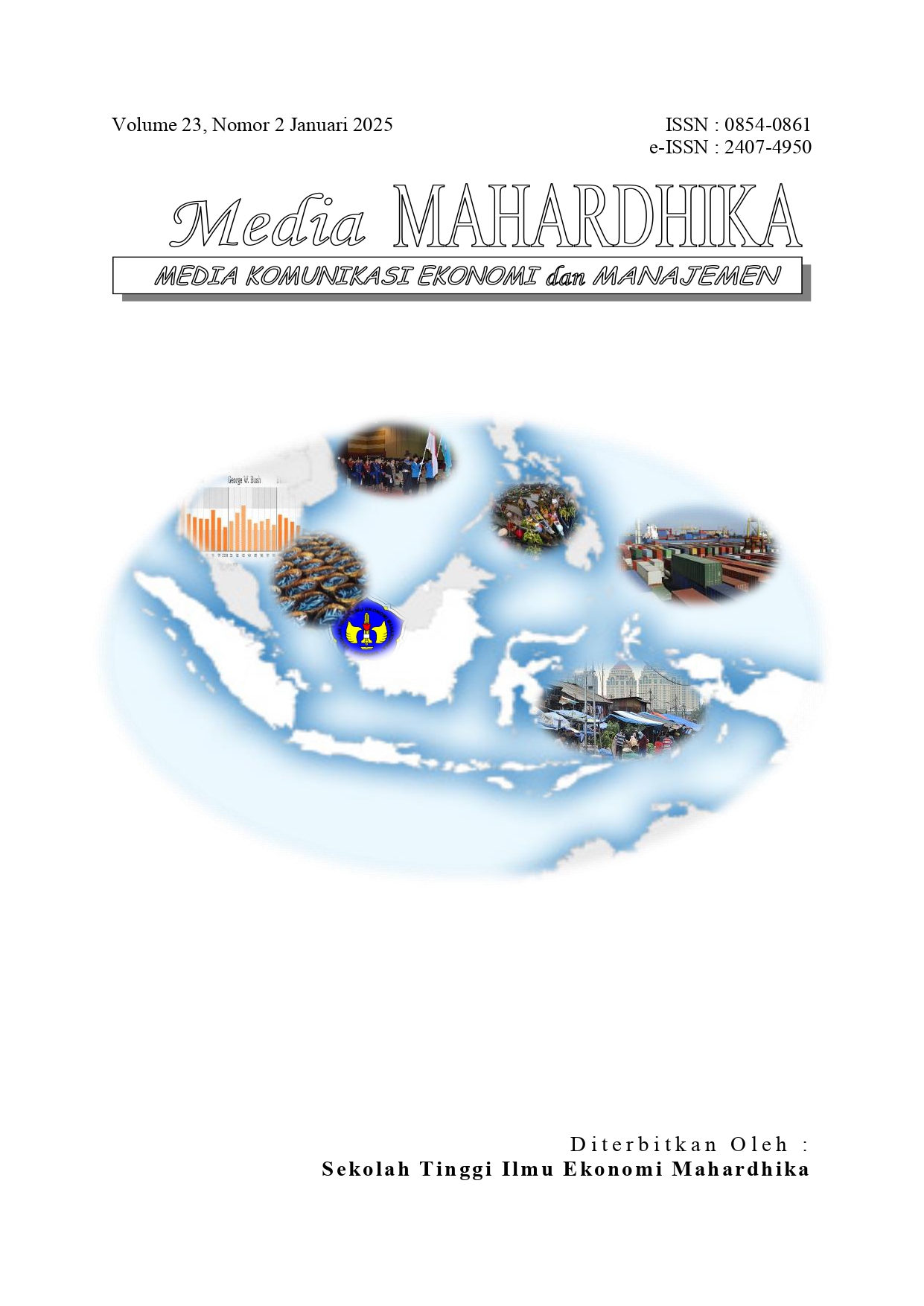MENGUNGKAP TREN PEMBAYARAN QRIS TERPOPULER DAN DINAMIKA PERILAKU PENGGUNA DI SALAH SATU PTN VOKASI BANDUNG
DOI:
https://doi.org/10.29062/mahardika.v23i2.1242Keywords:
QRIS, Digital Wallet, User BehaviorAbstract
Digital payments continue to grow over time, especially payment through the QRIS (Quick Response Code Indonesian Standard) method has become a digital payment innovation that is growing ubiquity in all circles, especially among students. The purpose of this study is to determine usage trends of QRIS at Politeknik Negeri Bandung, banks, and students' favorite digital wallets, and identify related factors that influence the choice of payment methods. The research method used a quantitative approach, the data was collected through a questionnaire involving 102 respondents from various departments throughout Politeknik Negeri Bandung and then the data was processed with the aid of SPSS 23. The outcomes of the analysis explained that BRI bank was the most popular bank with a percentage of 39.2% and DANA digital wallet was the most popular choice among Politeknik Negeri Bandung students. In addition, QRIS has been shown to significantly impact user behavior, using the coefficient of determination (r²) value of 67%. The convenience, security, and customization factors of QRIS contribute to its widespread adoption in the Bandung State Polytechnic campus environment. This research aims to be a reference for educational institutions and financial service providers in optimizing a better and more suitable digital payment system, especially among students.
Downloads
References
Ardana, S. G., Luqyana, A. S., Antono, I. A. L., Rahayu, R. P., Qonita, L., Zahra, S. A., & Alsyahdat, F. (2023). Efektifitas Penggunaan QRIS bagi Kalangan Mahasiswa UNNES untuk Transaksi Pembayaran dalam Rangka Mendorong Perkembangan Ekonomi pada Era Digitalisasi. Jurnal Potensial, Volume 2 No. 2.
ASPI Indonesia. (n.d.). QRIS - Pembayaran Digital Menggunakan QR Code. Retrieved December 2, 2024
Bank Indonesia. (2020). Retrieved from bi.go.id: https://www.bi.go.id/id/fungsi-utama/sistempembayaran/
Bukama, S., Hanggara, B. T., & Syawli, A. (2017). Pengaruh Adopsi E-commerce dan E-payment terhadap Kinerja UMKM di Kelurahan Penanggungan. Program Studi Sistem Informasi, Fakultas Ilmu Komputer, Universitas Brawijaya.
Centre for Digital Society (CfDS). (2021). Cashless society di Indonesia: Risiko dan tantangan. Universitas Gadjah Mada.
Chaniago, Harmon., Muharam, Hari., Efawati, Yen. (2023). Metode Riset Bisnis dan Permodelan. Bandung: Edukasi Riset Digital, PT
DBS Indonesia. (n.d.). Sejarah QRIS di Indonesia dan manfaatnya hingga kini. Retrieved December 5, 2024
Flip. (n.d.). Kelebihan dan kekurangan QRIS. Retrieved December 5, 2024
Handayani, T., & Sudiana. (2015). Analisis penerapan model UTAUT (Unified Theory of Acceptance and Use of Technology) terhadap perilaku pengguna sistem informasi (Studi kasus: Sistem Informasi Akademik pada STTNAS Yogyakarta). Sekolah Tinggi Teknologi Nasional.
Kotler, P., & Keller, K. L. (2012). Marketing Management (14th ed.). Pearson Education.
Nugraha, J. P., Alifah, D., Sinulingga, G., Rojiati, U., Saloom, G., Rosmawati, ..., & Beribe, M. F. B. (2021). Teori Perilaku Konsumen.
Rizal, A. (2019). Nih! Sepuluh Daftar e-wallet terpopuler di Indonesia 2019 versi iPrice. Info Komputer.
Sugiyono. 2018. Metode Penelitian Kuantitatif, Kualitatif, dan R&D. Bandung: Alfabeta.
Suyanto. (2023). Dompet Digital. Jakarta: IPWIJA Press.
Telkomsel. (n.d.). Kelebihan dan kekurangan dompet digital (e-wallet) di Indonesia. Retrieved December 5, 2024
Published
Issue
Section
License
Copyright (c) 2025 Joy Tessyaloni Rosliana, Alifia Aura Azzahra

This work is licensed under a Creative Commons Attribution-ShareAlike 4.0 International License.






